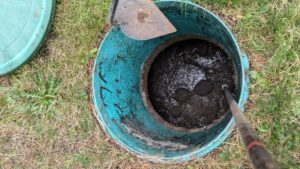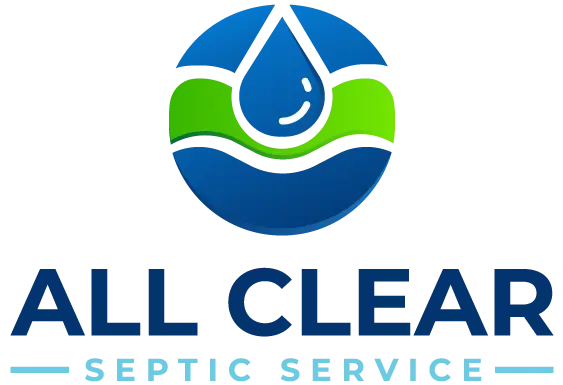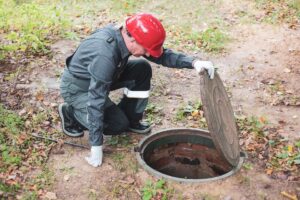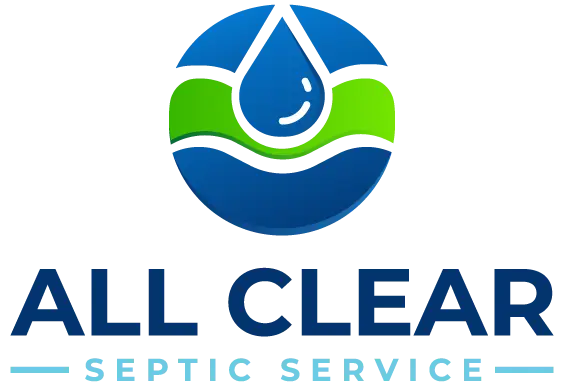Septic systems are a crucial part of many homes, especially in rural or coastal areas where municipal sewage systems aren’t available. These underground systems treat and dispose of household wastewater, but they require regular care to prevent costly breakdowns and environmental hazards.
A septic inspection is a key component of this care, helping homeowners identify potential issues before they become major problems.
Today, we’ll explore what a septic inspection entails, why it’s important, and how to keep your system running smoothly.
We’ll also discuss the potential risks of neglecting septic inspections and the benefits of working with a reputable company like All Clear Septic.
What is a Septic Inspection?

A septic inspection is a detailed assessment of your septic system performed by a trained professional. It’s designed to ensure everything is working as it should and to catch potential issues before they spiral out of control. During an inspection, the technician will:
- Clean all filters
- Check pump, alarm, and all other mechanical aspects
- Examine the septic tank for leaks, cracks, or structural damage.
- Measure sludge and scum levels to determine if pumping is necessary.
- Flush drainfield lines to keep them moving healthily
- Educate homeowner on proper care and use
- Inspect the drainfield (or leach field) to confirm it’s properly absorbing and filtering wastewater.
- Assess overall system performance to identify any warning signs of trouble.
One critical part of the process involves taking a core sample from the tank to measure sludge buildup accurately. Contrary to the common advice of pumping every 3-5 years, experts recommend pumping only when sludge reaches 1/3 of the tank’s total volume.
This prevents excess material from flowing into the drainfield and causing clogs or failure. A septic inspection gives you this precise insight, ensuring maintenance is done when it’s truly needed.
Why Should I Get a Septic Inspection?
Getting a septic inspection isn’t just a box to check, it’s a proactive step with real benefits. Here’s why it’s worth your time and investment:
1. Prevent Expensive Repairs
A failing septic system can lead to major repair bills ranging from $15,000 to $25,000 or even a full replacement. On top of the financial hit, dealing with backups, property damage, and environmental hazards is a major headache.
Regular inspections catch small problems like minor leaks or blockages before they escalate. Think of it like car maintenance you wouldn’t drive for years without an oil change or a tune-up, so don’t neglect your septic system. Just like a car, it needs regular check-ups to keep running smoothly and avoid costly breakdowns.
If sludge levels get too high and spill into the drainfield, it can clog the system and require a complete overhaul. Inspections ensure you stay ahead of potential failures and save thousands in repairs.
2. Safeguard Health and the Environment
A malfunctioning septic system can contaminate groundwater, posing a serious risk if your home relies on a personal well for drinking water. In areas where homes use both septic systems and wells, failing systems too close to wells create environmental hazards.
Coastal properties, especially on islands, face additional challenges due to high water tables and proximity to sensitive ecosystems. A failing system here can pollute nearby water bodies, harming wildlife and violating environmental standards.
3. Stay Compliant with Local Rules
Many regions, particularly critical environmental areas, enforce strict septic maintenance regulations. Regular inspections ensure your system meets these standards, helping you avoid fines or legal issues.
Coastal and island homes often face tougher rules due to their environmental impact. An inspection keeps you on the right side of the law while protecting your community.
4. Extend Your System’s Lifespan
With proper care, a septic system can last 20-30 years or longer. Inspections identify wear and tear early, allowing you to fix issues before they cut your system’s life short.
Neglecting maintenance, however, can lead to premature failure and no one wants to replace a system sooner than necessary.
5. Gain Peace of Mind
Knowing your septic system is in good shape eliminates the stress of unexpected backups, foul smells, or emergency repairs. Inspections let you plan maintenance like pumping—on your terms, not in a crisis.
Inspection Frequency: How Often Do You Need One?
For conventional gravity septic systems, inspections are recommended every 3 years. However, if you have any other type of system such as a pressure distribution, mound, or aerobic treatment unit you should schedule an inspection every year to ensure proper function and avoid costly issues.
If you’re buying or selling a home, an inspection may be required as part of the process. Always check local regulations to stay compliant and protect your investment.
Pumping, however, shouldn’t follow a rigid schedule. An inspection’s core sample will show if sludge has hit that 1/3 threshold pumping too often wastes money, while waiting too long risks damage.
Keeping Your Septic System Running: Best Practices
To keep your system in top shape and reduce the need for urgent fixes, follow these steps:
Educate Yourself!
Knowledge is your first defense. Learn how your system works and what can harm it. Improper use, like flushing non-biodegradable items (wipes, tampons, grease)—can cause rapid failure.
Use It Properly
Avoid harsh chemicals like bleach or drain cleaners, which disrupt the tank’s beneficial bacteria.
Steer clear of these no-nos:
- Harsh medications (e.g., chemotherapy drugs)
- Water softener runoff
- Powdered soaps/detergents and bath bombs
- Excess food from garbage disposals
- These can damage the system or overload it with solids.
Schedule Regular Inspections
Stick to a 1-3-year inspection routine to spot issues early. In critical areas—like coastlines or near wells, you might need them more often.
Pump When Recommended
Rely on inspection results, not a calendar. Pump only when sludge hits 1/3 of the tank’s volume to keep the drainfield clear and functional.
Protect the Drainfield
Don’t park cars or build over the drainfield, compacted soil can crush pipes. Keep trees and shrubs away too, as roots can infiltrate and clog the system.
What About Advanced Septic Systems?
Not all septic systems are the same. While traditional setups use a tank and drainfield, advanced systems treat wastewater to higher standards and require more maintenance than conventional gravity systems.
Common types of advanced septic systems include:
- ATU (Aerobic Treatment Unit) – Uses oxygen to break down waste more efficiently.
- Sand Filter System – Filters wastewater through layers of sand for additional treatment.
- Drip System – Slowly disperses treated wastewater into the soil through small drip tubing.
If you have an advanced system, follow the manufacturer’s guidelines and work with a professional experienced in these setups. Your inspection and maintenance schedule may differ from standard systems, so regular check-ups are essential.
Why Some Areas Demand Extra Attention
Septic systems in certain locations need more TLC due to unique challenges:
- Coastal and Island Properties: High water tables can hinder drainfield performance, and failing systems risk polluting nearby waters, making inspections critical.
- Homes with Personal Wells: If your drinking water comes from the same ground your septic system serves, contamination is a real threat. Regular checks are non-negotiable.
- Critical Areas: Ecologically sensitive zones often have stricter rules to protect local ecosystems, think coastlines, wetlands, or watersheds.
- Small Lots: Homes with limited space face bigger risks if their septic system fails. An untreated system could affect your neighbor’s property, leading to liability issues. Plus, with little room for a replacement system, proactive maintenance is key to avoiding costly and complicated fixes.
In these spots, staying proactive with inspections prevents both personal headaches and broader environmental harm.
Conclusion
A septic inspection is your ticket to a healthy, long-lasting system. It’s a small investment that pays off by preventing costly repairs, protecting your health, and keeping the environment safe. Whether you’re on a coastal island, relying on a well, or just want peace of mind, understanding what an inspection involves and why it matters empowers you to take charge of your home’s maintenance.
Start with education, follow best practices, and schedule that inspection if it’s been a while. For all your septic inspection needs, trust the experts at All Clear Septic. Contact us today to schedule your inspection and keep your system running smoothly.
FAQS
1- Do I need a septic inspection before buying a home?
Yes, a septic inspection is highly recommended before buying a home to avoid costly repairs. Some lenders even require an inspection before approving a mortgage for properties with septic systems.
2- What are the signs that my septic system is failing?
Watch out for these warning signs:
- Slow drains or gurgling sounds from pipes.
- Sewage odors inside or outside your home.
- Soggy spots or lush grass near the drainfield.
- Frequent backups in toilets or sinks.
If you notice any of these, schedule a septic inspection immediately.
3- How long does a septic inspection take?
A standard septic inspection takes 1 to 3 hours, depending on the system’s condition, size, and accessibility. More detailed inspections, such as those required for real estate transactions, may take longer.
4- Can I inspect my septic system myself?
While you can check for obvious issues like odors or slow drains, a professional septic inspection is necessary to assess internal components, sludge levels, and structural integrity. DIY checks won’t replace expert assessments.
5- Do septic inspections include pumping?
No, a septic inspection and septic pumping are different services. Inspections check for system health, while pumping removes accumulated sludge and scum. However, an inspection will determine whether pumping is necessary.
6- Can a failing septic system contaminate well water?
Yes, a failing septic system can leak harmful bacteria and chemicals into groundwater, putting well water at risk. Regular inspections help prevent contamination and protect drinking water quality.
7- Are septic inspections required by law?
In some areas, septic inspections are mandatory, especially for home sales or properties near water sources. Regulations vary, so check with your local health department.
8- Who Should I Call for a Septic Inspection in Whidbey, Camano, and Snohomish County?
If you’re in Whidbey Island, Camano Island, or Snohomish County, All Clear Septic provides professional septic inspections to keep your system in top shape and prevent costly repairs. Our expert team ensures your septic system functions properly, helping you avoid major issues before they happen. Contact us today to schedule an inspection!




